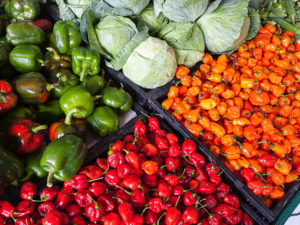- LOGISTICS
- TECHNOLOGY
- All Technology
- Artificial Intelligence
- Cloud & On-Demand Systems
- Data Management (Big Data/IoT/Blockchain)
- ERP & Enterprise Systems
- Forecasting & Demand Planning
- Global Trade Management
- Inventory Planning/ Optimization
- Product Lifecycle Management
- Robotics
- Sales & Operations Planning
- SC Finance & Revenue Management
- SC Planning & Optimization
- Supply Chain Visibility
- Transportation Management
- GENERAL SCM
- Business Strategy Alignment
- Customer Relationship Management
- Education & Professional Development
- Global Supply Chain Management
- Global Trade & Economics
- Green Energy
- HR & Labor Management
- Quality & Metrics
- Regulation & Compliance
- Sourcing/Procurement/SRM
- SC Security & Risk Mgmt
- Supply Chains in Crisis
- Sustainability & Corporate Social Responsibility
- WAREHOUSING
- INDUSTRIES
- THINK TANK
- WEBINARS
- PODCASTS
- WHITEPAPERS
- VIDEOS
Home » Publications » Supply Chain Brain Magazine
Our Publications
Please select a publication below.
Supply Chain Brain Magazine

100 Great Supply Chain Partners of 2020
Volume: 24
Edition: 3
Featured
Back to TopCase Studies
Back to TopCase Study
Geodis Boosts Putaway Productivity With Autonomous Mobile Robots
August 1, 2020
CASE STUDY
Sleep Number’s Demand-Planning Dream: Getting the Numbers Right
November 19, 2019
CASE STUDY
On Road to Growth, Small Company Gets a Handle on Manufacturing
December 19, 2019
Case Study
For The Wenger Group, Process Automation Means Improved Food Safety
August 1, 2020
CASE STUDY
A ‘Hyper-Local’ Organic Food-Delivery Service Strives for Hyper-Efficiency
February 6, 2020
Case Study
A Green Nutritional Powder Catches On, But Its Supply Chain Needed to Catch Up
August 1, 2020
Subscribe to our Daily Newsletter!
Timely, incisive articles delivered directly to your inbox.
Popular Stories
Case Studies
-
Recycled Tagging Fasteners: Small Changes Make a Big Impact
-

Enhancing High-Value Electronics Shipment Security with Tive's Real-Time Tracking
-

Moving Robots Site-to-Site
-
JLL Finds Perfect Warehouse Location, Leading to $15M Grant for Startup
-
Robots Speed Fulfillment to Help Apparel Company Scale for Growth
- LOGISTICS
- TECHNOLOGY
- All Technology
- Artificial Intelligence
- Cloud & On-Demand Systems
- Data Management (Big Data/IoT/Blockchain)
- ERP & Enterprise Systems
- Forecasting & Demand Planning
- Global Trade Management
- Inventory Planning/ Optimization
- Product Lifecycle Management
- Robotics
- Sales & Operations Planning
- SC Finance & Revenue Management
- SC Planning & Optimization
- Supply Chain Visibility
- Transportation Management
- GENERAL SCM
- Business Strategy Alignment
- Customer Relationship Management
- Education & Professional Development
- Global Supply Chain Management
- Global Trade & Economics
- Green Energy
- HR & Labor Management
- Quality & Metrics
- Regulation & Compliance
- Sourcing/Procurement/SRM
- SC Security & Risk Mgmt
- Supply Chains in Crisis
- Sustainability & Corporate Social Responsibility
- WAREHOUSING
- INDUSTRIES
- THINK TANK
- WEBINARS
- PODCASTS
- WHITEPAPERS
- VIDEOS












.jpg?height=100&t=1742184082&width=150)

